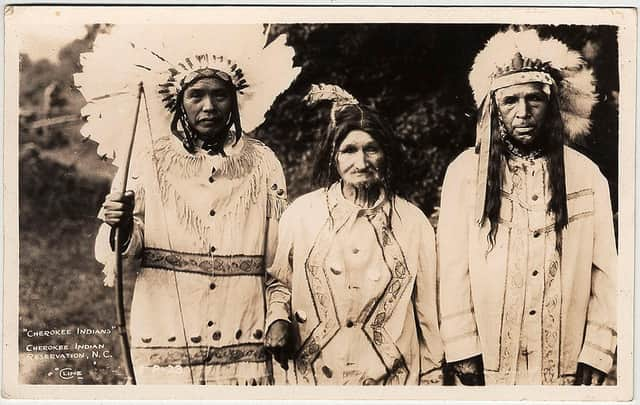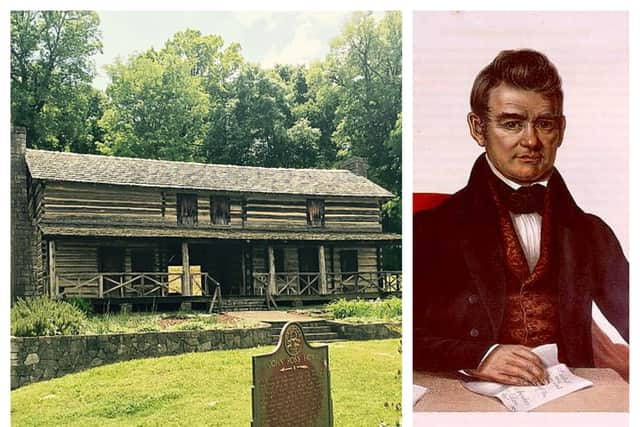The Highlander who led the Cherokee for almost 40 years


John Ross, whose family were originally from Sutherland, became a powerful leader of the Cherokee people after his father emigrated to the United States.
Ross went on to play a critical role in protecting the rights of the indigenous people with him imprisoned and left without a home as he fought against the corruption of forced sales of Cherokee land that was coveted by European settlers as prime cotton growing terrain.


Advertisement
Hide AdAdvertisement
Hide AdRoss went on to lead his people on the Trail of Tears, a route that spanned thousands of miles from traditional lands inhabited by indigenous populations on the east of the Mississippi - including sGeorgia, Alabama and Tennessee - to a new designated Indian Territory in present-day Oklahoma.
At least 4,000 Cherokee died on the journey to this unknown western prairie - including Ross’s wife Quatie - with most buried in unmarked graves on the way.
Ross’s campaigning work to improve the route, make it safer and easier to survive, is credited with saving the lives of many more.
Jason Ubych of Tain and District Museum and Clan Ross Centre, said: “John led the struggle by the Cherokee people against forced and brutal relocation from their homeland in 1838, a story that has many similarities to the clearances in the Highlands being perpetrated at the same time.”
John’s father, Daniel, left Sutherland for America as a young boy with his parents in the 1760s, although the reason for their departure is not entirely clear.
John Ross was born in 1790 at Turkeytown in Alabama and his mother - whose father John MacDonald was also Scottish - was one-quarter Cherokee.
By 1800, the Cherokee Nation was educated and literate with John growing up bilingual and bicultural as a result.
Mr Ubych said: “The Cherokee Nation, by the 1800s, may not have been quite how you would imagine it, with many being of mixed race, they had embraced formal education, developing a written language the tribe enjoyed a higher rate of literacy than many of the European settlers, who were putting them under increasing pressure for their land and well-stocked modern farms.”
Advertisement
Hide AdAdvertisement
Hide AdRoss, who was slightly built, slightly reserved and who preferred to wear a pressed suit rather than typical Cherokee dress, was increasingly called to represent the Cherokee Nation in Washington.
A landowner himself, he made much of his fortune from a tobacco plantation in Tennessee which was worked by 20 slaves.
From 1819 to 1826, he served as a president of the Cherokee National Council and during this spell, he exposed attempts by federal commissioners to bribe him into approving Cherokee land sales.
In 1828, he became principal chief of the Cherokee Nation, a position he held for almost 40 years until his death in 1866.
“His defence of Cherokee freedom and property used every means short of war,” Mr Ubych said.
The Indian Removal Act of 1830 forced indigenous people from their land with a group of fewer 500 Cherokee signing a treaty which effectively sold their traditional terrain to the United States.
Ross gathered 16,000 signatures of Cherokees who opposed it, but President Andrew Jackson pushed the treaty through Congress regardless.
What followed was the Trail of Tears, where the “death marches” of Native Americans exposed them to disease, violence, starvation and the elements.
Advertisement
Hide AdAdvertisement
Hide AdAlthough Ross’s life was devoted to the Cherokee, his Scottish heritage continued to resonate. In 1847, he helped to arrange a Cherokee fundraiser for those suffering from famine in the Highlands with $190 sent to a New York bank for the cause.
A message from the Editor:
Thank you for reading this story on our website. While I have your attention, I also have an important request to make of you.With the coronavirus lockdown having a major impact on many of our advertisers - and consequently the revenue we receive - we are more reliant than ever on you taking out a digital subscription.Subscribe to scotsman.com and enjoy unlimited access to Scottish news and information online and on our app. With a digital subscription, you can read more than 5 articles, see fewer ads, enjoy faster load times, and get access to exclusive newsletters and content.
Visit https://www.scotsman.com/subscriptions now to sign up.
Our journalism costs money and we rely on advertising, print and digital revenues to help to support them. By supporting us, we are able to support you in providing trusted, fact-checked content for this website.
Joy Yates
Editorial Director
--